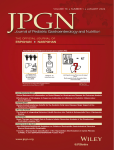Systemic Bartonella henselae Infection with Hepatosplenic Involvement
ABSTRACT
Background:
Systemic manifestations of Bartonella henselae infection are rare in the immunocompetent host. The infection generally has initial symptoms of prolonged fever and multiple granulomatous lesions in liver and spleen.
Methods:
Retrospective analysis of the records of all patients with hypoechogenic lesions in the liver and/or spleen diagnosed from 1990 through 1996 in three pediatric clinics in northern Italy,
Results:
Among the 13 patients reviewed, 9 had evidence of B. henselae infection and hepatosplenic involvement: five had prolonged and unexplained fever lasting from 3 to 16 weeks, and four had typical cat-scratch disease and peripheral lymphadenitis. All patients had increased sedimentation rate and normal aminotransferase serum activity. Five children had a liver biopsy, by laparotomy in three and by needle in two. In all, the predominant liver lesion was a necrotizing granuloma. All patients were treated with broad-spectrum antibiotics. Fever lasted from 3 to 16 weeks, and hepatic and splenic lesions resolved in all with residual splenic calcification in one.
Conclusions:
Systemic B. henselae infection represents an important cause of inflammatory hypoechogenic hepatosplenic lesions in children. Serology provides rapid diagnosis, avoiding multiple and invasive investigations. Hepatosplenic involvement can be found even in children with typical cat-scratch disease without apparent systemic manifestations. The frequency of liver and/or splenic involvement in cat-scratch disease is probably underestimated.




